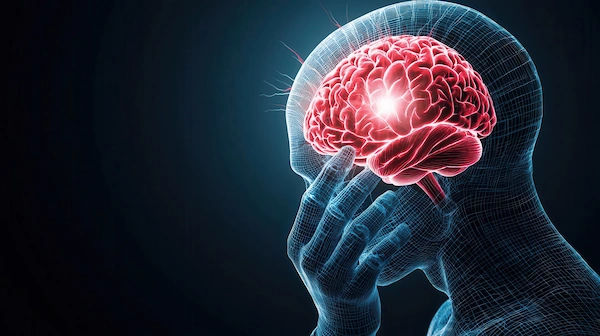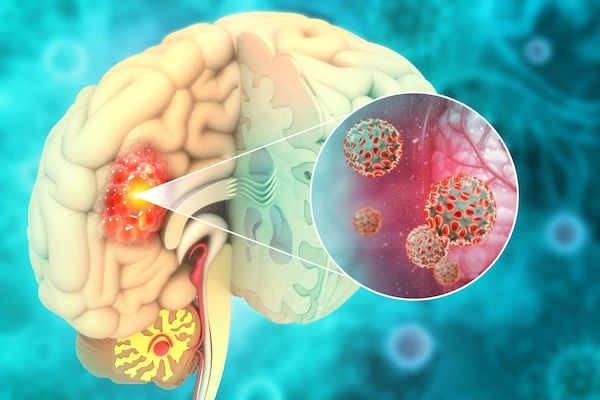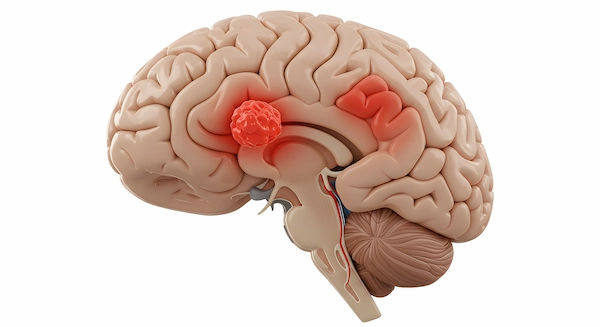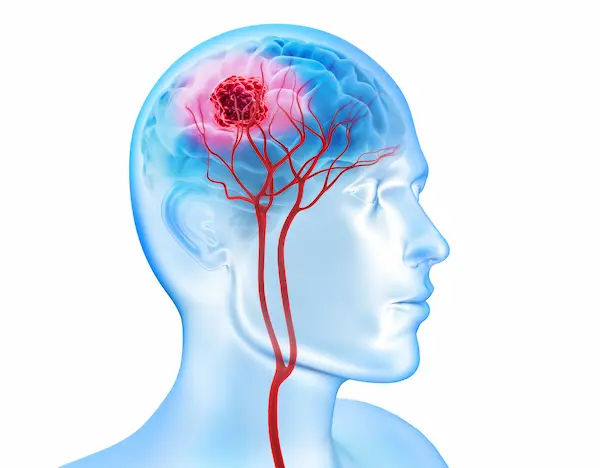Brain Tumour Warning Signs: A Symptom Guide from Headaches to Changes
Know about the brain tumour, what it is, warning signs, location-specific symptoms, worrisome symptoms, diagnosis and more.

Written by
Last updated on 22nd Sep, 2025

Introduction
Not every headache is a cause for alarm, but certain persistent neurological symptoms can be your body's way of sending a crucial signal. Understanding the warning signs of a brain tumour is the first step toward seeking timely medical intervention. This guide demystifies the symptoms, moving beyond the fear and focusing on factual, actionable information. We'll explore the common signs—from the well-known severe headaches to the less obvious changes in personality or vision—and help you understand what differentiates them from everyday ailments. Our goal is to empower you with knowledge, so you can advocate for your health effectively. Remember, most people with these symptoms do not have a brain tumour, but recognising the patterns is key to ruling out serious conditions. If your condition does not improve after trying common remedies, book a physical visit to a doctor with Apollo24|7 for further evaluation.
Understanding Brain Tumours: A Quick Primer
Before diving into symptoms, it's helpful to know what we're talking about. A brain tumour is a mass or growth of abnormal cells in your brain. Your skull, which encloses your brain, is very rigid. Any growth inside such a restricted space can cause problems, primarily by increasing pressure on the brain (intracranial pressure), interfering with normal brain function, or invading and damaging healthy brain tissue.
It's a critical distinction that not all brain tumours are cancerous. Benign tumours are slow-growing, have distinct borders, and rarely spread to other parts of the body. However, even a benign brain tumour can be life-threatening if it's located in a vital area of the brain, as it can increase intracranial pressure. Malignant (cancerous) tumours are faster-growing, can invade surrounding tissue, and are generally more serious. Symptoms often arise from the pressure the tumour places on the brain or from the tumour interfering with the function of a specific part of the brain.
Health topic carousel:
Doctor's speciality: Oncologist
Text: Consult an Oncologist for Personalised Advice
The Most Common Warning Signs of a Brain Tumour
The symptoms of a brain tumour are incredibly varied and depend on the tumour’s size, location, and rate of growth. However, some general signs are common across many cases.
Headaches That Raise a Red Flag
Headaches are the symptom most commonly associated with brain tumours, but they are also the most common ailment in the world. So, how can you tell the difference? Brain tumour headache characteristics often include:
New onset: A brand new type of headache you've never experienced before.
Change in pattern: A pre-existing headache that becomes more frequent or severe.
"Alarm clock" headaches: Waking you up from sleep, often in the early morning.
Persistent and worsening: They don't go away with standard over-the-counter pain relievers and get consistently worse over days or weeks.
Aggravated by activity: Coughing, sneezing, exercising, or bending over can make them worse.
How Are Brain Tumour Headaches Different?
While migraines or tension headaches can share some traits, the key differentiator is often the presence of other neurological symptoms (like weakness or vision changes) and their persistent, progressive nature.
Seizures: A Sudden and Scary Symptom
A seizure is often one of the first signs of a brain tumour. A tumour can irritate the brain's neurons, causing them to fire uncontrollably and leading to seizures. These can take many forms, not just the convulsions most people picture. They might involve twitching of a single body part, a brief loss of awareness, a strange smell or taste, or a sudden feeling of fear or déjà vu. Any new, unexplained seizure in an adult is a major red flag requiring immediate medical attention.
Cognitive and Personality Changes
Family members are often the first to notice these subtle shifts. You might experience:
Unexplained confusion in everyday matters.
Memory problems, especially with short-term memory. Difficulty concentrating or focusing on tasks.
Changes in personality or behaviour, such as becoming withdrawn, irritable, or acting out of character.
Nausea, Vomiting, and Unexplained Dizziness
Persistent nausea and vomiting, particularly when it's worse in the morning or not related to a gastrointestinal illness, can be a sign of increased pressure within the skull. This pressure affects the brain's vomiting centre. Similarly, a general feeling of dizziness, vertigo (a sensation of spinning), or a loss of balance can indicate a tumour affecting the cerebellum or the parts of the brain responsible for coordination.
Location-Specific Symptoms: Where the Tumour Is Matters
The brain is a complex organ where different regions control specific functions. The location of a tumour dictates the specific symptoms it causes, providing neurologists with clues about its position.
Frontal Lobe Symptoms (Personality, Movement)
The frontal lobe governs reasoning, planning, emotions, problem-solving, and movement. A tumour here might cause:
Weakness or paralysis on one side of the body.
Personality changes, lack of inhibition, or apathy.
Loss of smell, speech difficulties (expressive aphasia).
Temporal Lobe Symptoms (Memory, Speech)
This region is key for memory, hearing, and understanding language. Symptoms include:
New problems with memory or learning.
Difficulty understanding spoken words (receptive aphasia).
Seizures are often linked to strange smells or feelings.
Parietal Lobe Symptoms (Sensation, Coordination)
The parietal lobe processes sensory information. A tumour can lead to:
Difficulty with spatial awareness (e.g., bumping into things on one side).
Problems with reading, writing, or doing math.
Numbness or a strange "pins and needles" sensation on one side of the body.
Occipital Lobe Symptoms (Vision)
As the visual processing centre, a tumour in the occipital lobe can cause:
Loss of vision in one eye or specific parts of the visual field.
Seeing flashing lights or shapes that aren't there (visual hallucinations).
Cerebellum Symptoms (Balance)
The cerebellum controls coordination and balance. Tumours here often cause:
Loss of balance and coordination (ataxia).
Dizziness, vertigo.
Difficulty with fine motor skills, like writing or buttoning a shirt.
Don't Panic: When to Actually Worry About These Symptoms
It is vital to reiterate that experiencing one or even several of these symptoms does not mean you have a brain tumour. Migraines, stress, vitamin deficiencies, strokes, and other neurological conditions can mimic these signs.
The Rule of Thumb: New, Persistent, and Worsening
The most significant red flags are a cluster of symptoms that are:
New: A dramatic change from your normal baseline health.
Persistent: They don't go away after a week or two.
Worsening: They are progressively getting more frequent or severe.
If you experience a sudden, severe headache unlike any before ("thunderclap headache"), a new seizure, sudden weakness or numbness, or a rapid decline in vision or consciousness, seek emergency medical care immediately. For less acute but persistent symptoms, it is crucial to schedule a consultation with a doctor for a professional evaluation.
What to Do If You Recognise These Signs?
Taking action is about being proactive, not panicked.
Keeping a Symptom Diary
Before your appointment, start a diary. Note:
Symptom: What exactly did you feel? (e.g., throbbing headache, dizzy spell).
Time & Duration: When did it start, and how long did it last?
Severity: Rate it on a scale of 1-10.
Triggers: Did anything seem to cause it? (e.g., standing up, reading).
What helped? Did rest or medication provide relief?
This diary is an invaluable tool for your doctor.
The Diagnostic Process: What to Expect
Your doctor will start with a detailed history and a neurological exam (testing your vision, hearing, balance, coordination, and reflexes). If they suspect a neurological issue, the next step is typically imaging. An MRI scan is the gold standard for viewing brain tissue in detail, often done with a contrast dye to highlight abnormalities. A CT scan can also be used. If a tumour is found, a biopsy may be needed to determine its type and grade.
Conclusion
Recognising the potential warning signs of a brain tumour is an essential aspect of health awareness. While it's important not to jump to conclusions and self-diagnose, it is equally important not to ignore persistent, unexplained neurological changes. This guide has outlined the common and location-specific symptoms to watch for, emphasising the pattern of their presentation. Knowledge empowers you to have an informed conversation with your healthcare provider. Trust your instincts. If something feels significantly wrong with your body, it deserves medical attention. A timely consultation can provide peace of mind or, in rarer cases, lead to an early diagnosis that significantly impacts treatment outcomes.
Health topic carousel:
Doctor's speciality: Oncologist
Text: Consult an Oncologist for Personalised Advice
FAQs
1. What are the earliest signs of a brain tumour?
A.The earliest signs are often subtle and non-specific, like persistent headaches that change pattern, unexplained nausea (especially in the morning), or a gradual shift in personality and memory. However, for some, the first sign is a sudden seizure.
2. Can an eye test detect a brain tumour?
A.Yes, sometimes. An optometrist can see swelling of the optic nerve (papilledema) at the back of your eye during a routine exam, which is a sign of increased intracranial pressure that could be caused by a brain tumour. They might also detect changes in your visual fields.
3. How long can you have a brain tumour before noticing symptoms?
A.It varies greatly. Slow-growing benign brain tumours like meningiomas can grow for years before causing enough pressure or disruption to create noticeable symptoms. Faster-growing malignant tumours may cause symptoms for weeks or months.
4. Are brain tumour headaches always severe?
A.Not always. Initially, they may be mild and intermittent, often mistaken for tension headaches or migraines. Their key characteristic is their progressive nature—they become more frequent and severe over time and are often resistant to common medications.
5. Can stress cause symptoms similar to a brain tumour?
A.Absolutely. High levels of stress and anxiety can manifest physically as headaches, dizziness, nausea, concentration problems, and even tremors or sensory changes, which can mimic some neurological symptoms. This is why a professional medical evaluation is crucial for an accurate diagnosis.




